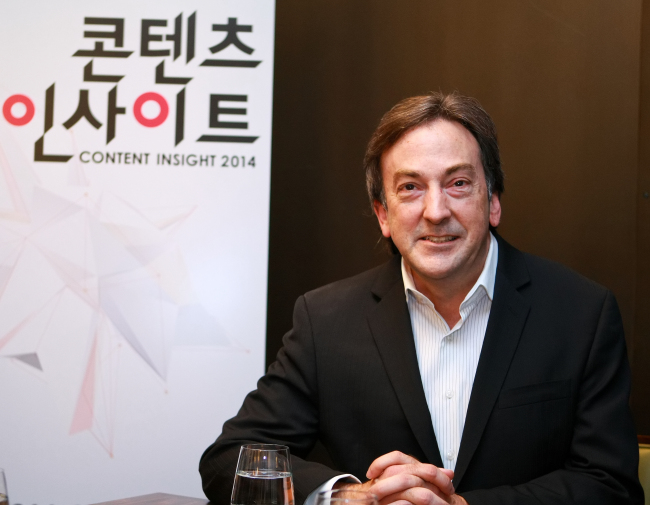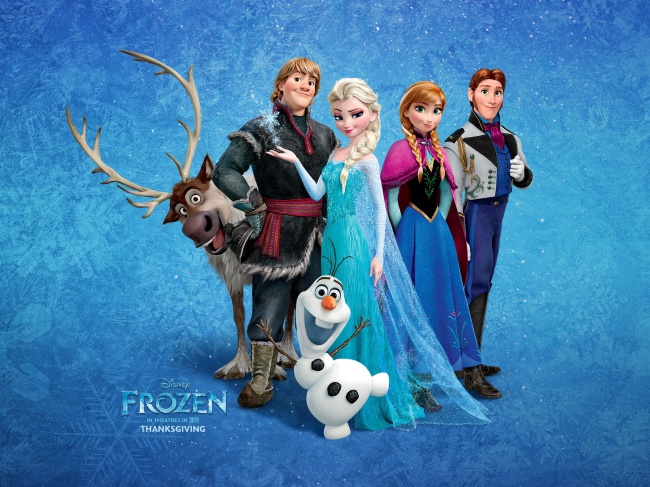How ‘Frozen’ characters were created
Producer of Disney animated film reveals movie back story
By Korea HeraldPublished : March 31, 2014 - 20:28
“Frozen” didn’t start off as a tale of two sisters.
In the beginning of production, Elsa was a self-proclaimed “Snow Queen,” a classic villainess. Anna was not related to Elsa. Neither of them were princesses.
It was only after the movie took multiple alternations in its nearly three-year production process that the two became sisters, and later, princesses of the kingdom of Arendelle, said Peter del Vecho, the award-winning producer behind Disney’s latest animated film, “Frozen.”
“Frozen,” which opened in Korea in January, was a phenomenal success here. It became the first animated film to break the 10 million viewer mark.
It was the greatest success that the movie has seen outside the U.S., according to del Vecho.
Loosely based on Hans Christian Andersen’s fairy tale “The Snow Queen,” the film follows the epic journey of Princess Anna to find her estranged sister Elsa, whose icy powers have trapped the kingdom in perpetual winter.
Coupled with beautiful music and striking visuals, the film attracted many 30-somethings in Korea, who grew up watching Disney animated movies, back to the theaters, this time bringing their children with them.
In the beginning of production, Elsa was a self-proclaimed “Snow Queen,” a classic villainess. Anna was not related to Elsa. Neither of them were princesses.
It was only after the movie took multiple alternations in its nearly three-year production process that the two became sisters, and later, princesses of the kingdom of Arendelle, said Peter del Vecho, the award-winning producer behind Disney’s latest animated film, “Frozen.”
“Frozen,” which opened in Korea in January, was a phenomenal success here. It became the first animated film to break the 10 million viewer mark.
It was the greatest success that the movie has seen outside the U.S., according to del Vecho.
Loosely based on Hans Christian Andersen’s fairy tale “The Snow Queen,” the film follows the epic journey of Princess Anna to find her estranged sister Elsa, whose icy powers have trapped the kingdom in perpetual winter.
Coupled with beautiful music and striking visuals, the film attracted many 30-somethings in Korea, who grew up watching Disney animated movies, back to the theaters, this time bringing their children with them.

Del Vecho said he knew that there was something special about the movie.
“The movie went through a lot of changes. But by the time we finished it, we knew that we had something special,” he told a group of reporters in Seoul on Monday. He was here to attend a forum organized by the Korea Creative Content Agency.
“We just hoped that the world would embrace it. Clearly, Korea has embraced it in a way that is beyond our expectations.”
The reason for the film’s success here, as well as in many other places, he said, is its universal theme that resonates with people, regardless of their gender, age and region.
“What I love about this movie is that everyone takes away something different,” he said.
The theme of “Frozen” is love versus fear, he explained.

Elsa, the older sister who isolates herself from the world out of fear that her powers may hurt others, represents fear. Anna, Elsa’s younger sister who takes on the adventure to find Elsa and break the spell on their kingdom, represents love and courage.
“Anna has no super powers. All she has is belief in herself, belief in others and a positive energy, but that eventually becomes her super power,” del Vecho went on.
As for Olaf, the funny little snowman created by Elsa, the producer linked it to innocent love.
Olaf was originally just a funny character, he said.
“It was an idea that director Chris Buck had: How fun it would be to have a character that falls part, then puts himself together and not gets hurt. It would allow a lot of physical humor.”
“It wasn’t until we connected him to the sisters that he represented the happy time in their life when the sisters were children. In doing so, we realized that Olaf can say things that touch the heart like no other characters could, much like a child who often says things that are very profound.”
As for Elsa and Anna, del Vecho said they were elevated to princesses much later in the production process, as a way of raising the stakes for Anna.
“If Anna were not only responsible for saving Elsa and but also protecting her kingdom, that raises the stake. So it came from the storytelling as a way of raising the stake,” he said.
Now that the movie is showing all over the world, with so many people identifying with the characters, the producer said he feels the movie has taken on a life of its own.
“It is overwhelming to watch the movie take off. It doesn’t feel like our movie anymore.”
Del Vecho joined Walt Disney Animation Studios in 1995. His past works include “Treasure Planet,” “The Princess and the Frog,” and “Winnie the Pooh.”
He believes that the strength of Disney lies in its constant efforts to produce a movie for everyone.
“John Lasseter, (chief creative officer of Walt Disney), constantly reinforces in us that we make movies for everyone. That quality is the No. 1 job responsibility. That applies not only to the story, but the actual animation itself,” he said.
“Plus, a lot of research on the environments, lots of details, all of that gives a richness and believability to the world. And the story ... has to have many layers that allow it to play for all audiences. It’s what we strive for,” he said.
By Lee Sun-young (milaya@heraldcorp.com)
-
Articles by Korea Herald


![[Exclusive] Korean military set to ban iPhones over 'security' concerns](http://res.heraldm.com/phpwas/restmb_idxmake.php?idx=644&simg=/content/image/2024/04/23/20240423050599_0.jpg&u=20240423183955)

![[Graphic News] 77% of young Koreans still financially dependent](http://res.heraldm.com/phpwas/restmb_idxmake.php?idx=644&simg=/content/image/2024/04/22/20240422050762_0.gif&u=)



![[Pressure points] Leggings in public: Fashion statement or social faux pas?](http://res.heraldm.com/phpwas/restmb_idxmake.php?idx=644&simg=/content/image/2024/04/23/20240423050669_0.jpg&u=)










